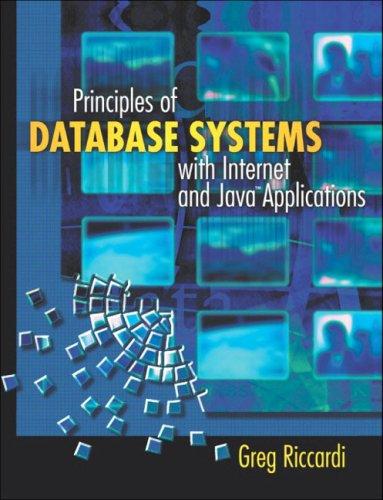Question
Question 41 (2 points) Suppose there are three processes P1, P2, and P3 with expected burst length 3, 6, and 7. Process P4 is added
Question 41 (2 points)
Suppose there are three processes P1, P2, and P3 with expected burst length 3, 6, and 7. Process P4 is added to the pool but its burst length is unknown. However, it is not expected to be the smallest or the largest burst-length process. Which of the following schedule will minimize the average waiting time?
Question 41 options:
|
|
P4, P3, P2, P1
|
|
|
P1, P4, P2, P3
|
|
|
P1, P3, P4, P2
|
|
|
P1, P2, P3, P4
|
|
|
P1, P2, P4, P3
|
Question 42 (1 point)
Increasing the quantum size in a round robin scheduling relative to the context switch time
Question 42 options:
|
|
increases ATT
|
|
|
improves responsiveness
|
|
|
does not affect ATT
|
|
|
decreases ATT
|
Question 43 (1 point)
Consider a preemptive priority scheduling algorithm based on dynamically changing priorities. Greater priority numbers imply higher priority. When a process is waiting for the CPU (in the ready queue, but not running), W is added to its priority value after each time unit. When it is executing on CPU, R is added to its priority value after each time unit. All processes are given a priority of 0 when they enter the ready queue for the first time. Here, W and R both are negative numbers with W < R. Which of the following scheduling algorithm is represented by this scheme?
Question 43 options:
|
|
First-in-first-out
|
|
|
Last-in-first-out
|
|
|
Round-robin ordered by priority values
|
|
|
Shortest-remaining-time-first
|
Step by Step Solution
There are 3 Steps involved in it
Step: 1

Get Instant Access to Expert-Tailored Solutions
See step-by-step solutions with expert insights and AI powered tools for academic success
Step: 2

Step: 3

Ace Your Homework with AI
Get the answers you need in no time with our AI-driven, step-by-step assistance
Get Started


